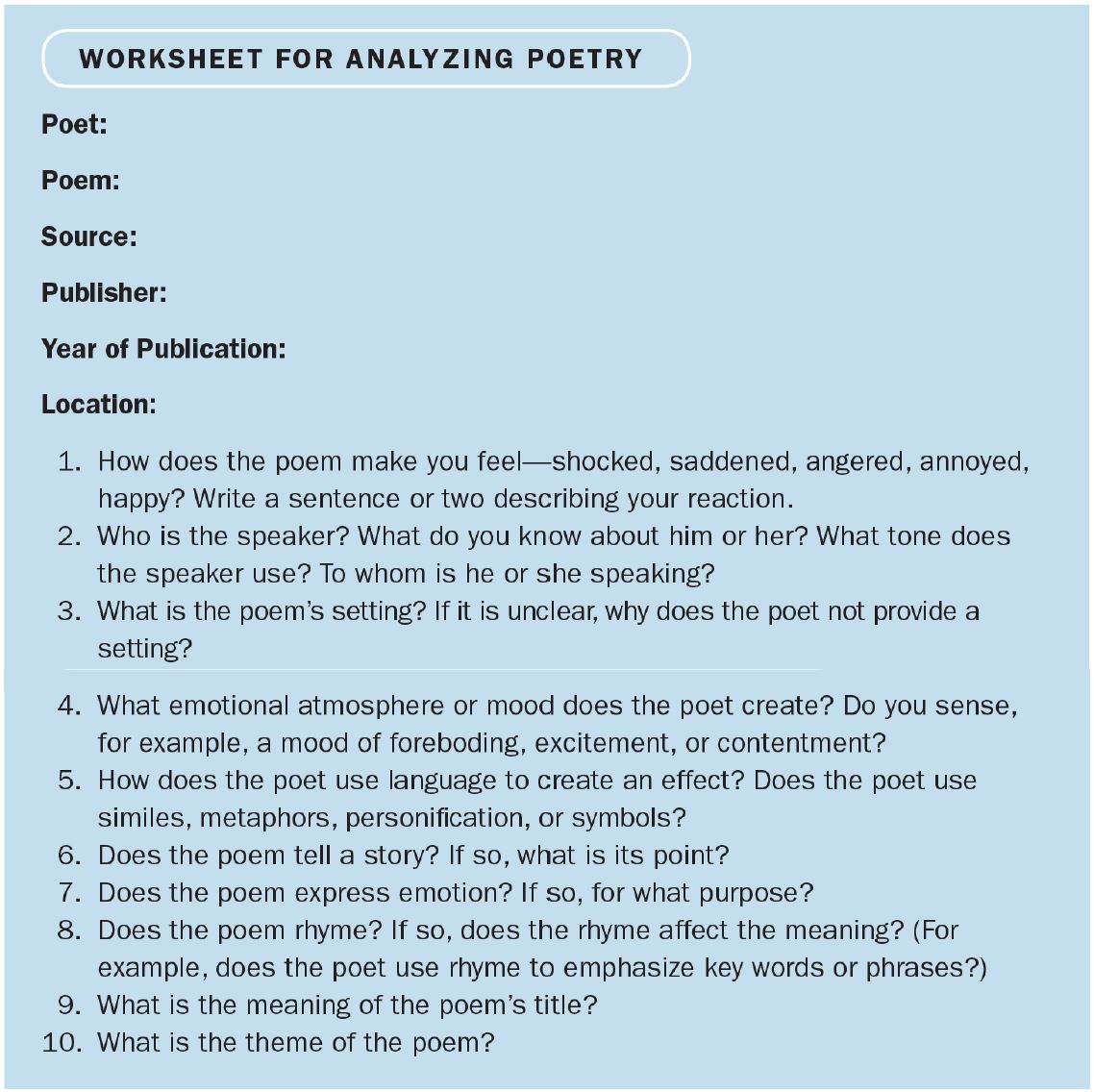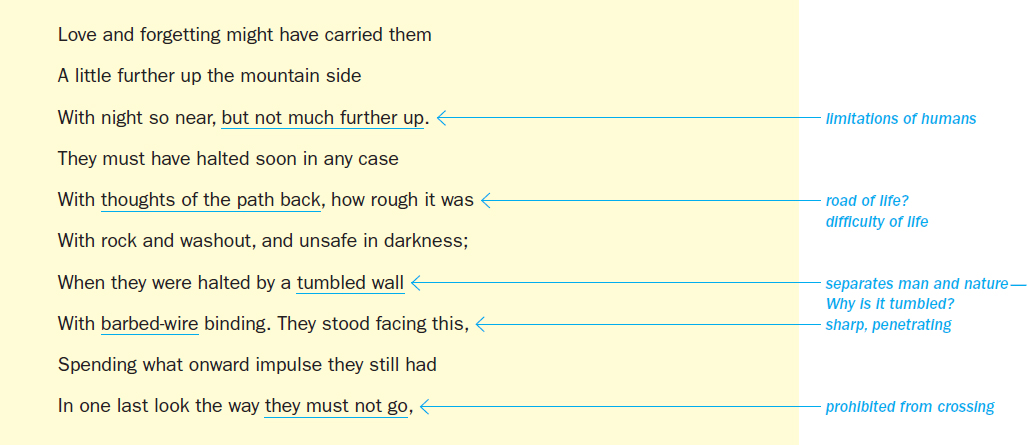ANALYZING POETRY
Poetry is written in lines and stanzas instead of in sentences and paragraphs. Because of the genre’s unique format, poets often express ideas in compact and concise language, and reading and analyzing a short poem may take as much time and effort as analyzing an essay or a short story. To grasp the meaning of a poem, pay attention to the sound and meaning of individual words and consider how the words work together to convey meaning. Use the following general guidelines to read and analyze poetry effectively.
Learning Style Options
- Read the poem through once, using the poem’s punctuation as a guide. Try to get a general sense of what the poem is about. If you come across an unfamiliar word or a confusing reference, keep reading. Although poetry is written in lines, each line may not make sense by itself. Meaning often flows from line to line, and a single sentence can be composed of several lines. Use the poem’s punctuation to guide you. If there is no punctuation at the end of a line, read the line with a slight pause at the end and with an emphasis on the last word. Think about how the poet breaks lines to achieve a certain effect.
- Read the poem several more times, annotating as you read. The meaning of the poem will become clearer with each successive reading. At first you may understand some parts but not others. If you are a spatial or an abstract learner, try to visualize, or see, what the poem is about. If you are a pragmatic or rational learner, you will probably want to work through the poem line by line, from beginning to end. With poetry, however, this approach does not always work. Instead, you may need to use later stanzas to help you understand earlier ones. If you find certain sections of the poem difficult or confusing, read these sections aloud several times. You might try copying them, word for word. Look up the meanings of any unfamiliar words in a dictionary.
As you read, annotate the poem, highlighting striking elements (figures of speech, symbols, revealing character descriptions, striking dialogue, and the like) and recording your reactions (A sample annotated passage appears in Figure 25.3). Pay particular attention to the following.
- The speaker and tone. Try to understand the speaker’s viewpoint or feelings to figure out who he or she is. Also consider the speaker’s tone: Is it serious, challenging, sad, frustrated, joyful? To determine the tone, read the poem aloud. Your emphasis on certain words or the rise and fall of your voice may provide clues to the tone; you may “hear” the poet’s anger, despondency, or elation.
- To whom the poem is addressed. Is it written to a person, the reader, an object? Consider the possibility that the poet may be writing to work out a personal problem or express strong emotions.
- Allusions. Look up unfamiliar allusions, or references, to people, objects, or events outside the poem. If you see Oedipus mentioned in a poem, for example, you may need to use a dictionary or encyclopedia to learn that he was a figure in Greek mythology who unwittingly killed his father and married his mother. Your knowledge of Oedipus would then help you interpret the poem.
- The language of the poem. Consider the connotations, or shades of meaning, of words in the poem. Study the poem’s use of descriptive language, similes, metaphors, personification, and symbols. (For more on connotations, see Chapters Chapters 4 and 10 for more on descriptive language, see Chapter 13.)
- The poem’s theme. Does its overall meaning involve a feeling, a person, a memory, or an argument? Paraphrase the poem; express it in your own words and connect it to your own experience. Then link your ideas together to discover the poem’s overall meaning. Ask yourself: What is the poet trying to tell me? What is the theme?
- Write a response. Copying passages from the poem and responding to those passages in writing can help you explore your reaction to the poem and grasp its meaning. Choose quotations from the poem that convey a main point or opinion, reveal a character’s motives, or say something important about the plot or theme. Describe your reaction to each quotation, interpreting, disagreeing with, or questioning it. Comment on the language of the quotation and relate it to other quotations or elements in the work. Here is a sample response to Frost’s “Two Look at Two”. (For more on connotations, see Chapters 4 and 10 for more on descriptive language, see Chapter 13.)
| “With thoughts of the path back, how rough it was” (line 5) | The couple’s past has been difficult; returning to daily life may be difficult, too. Nature is rough and challenging. |
| . . . “This is all,” they sighed, “Good-night to woods.”. . . (lines 13–14) | The couple will soon come to the end — of their relationship or their lives. |

